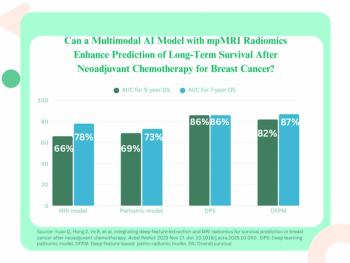
fMRI shows response to treatment for neuroendocrine liver metastases
Contrast-enhanced and diffusion-weighted MR imaging can confirm the effects of transarterial chemoembolization treatment on liver metastases from neuroendocrine tumors, according to Johns Hopkins University researchers.
Contrast-enhanced and diffusion-weighted MR imaging can confirm the effects of transarterial chemoembolization treatment on liver metastases from neuroendocrine tumors, according to Johns Hopkins University researchers.
The tumors, referred to in the clinical literature as gastroenteropancreatic neuroendocrine tumors (GEP-NET), are rare and generally slow-growing. Hepatic metastases from these tumors appear frequently, however, and these can be cured only in about one of 10 patients.
Most patients are therefore candidates for palliative therapy, which could slow tumor growth, control hormonal imbalances inherent to these malignancies, and extend survival. Transcatheter arterial chemoembolization (TACE) is one of many palliative options.
Guidelines from the World Health Organization and the Response Evaluation Criteria in Solid Tumors (RECIST) - the standard methods for evaluating treatment response - rely on anatomic criteria and cannot accurately assess TACE's results, however. An anatomic/functional assessment with contrast-enhanced MRI and DWI may effectively show treatment effect after TACE, according to the investigative team led by Dr. Eleni Liapi, a researcher for the Russell H. Morgan Department of Radiology and Radiological Sciences at Hopkins.
Liapi and colleagues evaluated 66 lesions from 26 patients with hepatic metastasis from GEP-NET treated with TACE. The investigators performed clinical examinations, liver function tests, and MRI studies with a 1.5T magnet before and after treatment. They recorded tumor size, percentage of enhancement in the arterial and portal venous phases, and DWI apparent diffusion coefficients (ADCs) of the tumor, liver, and spleen. They also recorded tumor response to treatment according to WHO and RECIST criteria.
The researchers found that contrast-enhanced MR and DWI showed significant changes after TACE, which could be used to assess treatment response of targeted tumors. They published their results in the January issue of the American Journal of Roentgenology (AJR 2008; 90:67-73).
Reductions in mean tumor size and percentage enhancement in the arterial and portal venous phases after treatment were statistically significant (60.8% before versus 31.1% after, p<0.0001). Tumor ADC increased from 1.51 x 10-3 mm2/sec before treatment to 1.79 x 10-3 mm2/sec after treatment (p<0.0001), but the ADCs for the liver and spleen remained unchanged. A mean change of 26.4% in tumor ADC was recorded for all targeted lesions.
Despite tumor size changes, no patient in this cohort achieved complete response according to WHO/RECIST guidelines. Partial response was achieved according to WHO/RECIST criteria in only 27% and 23% of the patients, respectively. Results of liver function tests and performance status also remained unchanged. The mean survival period for all patients was 78 months.
The study had several limitations, including population sample size, patient selection bias, and lack of histopathologic confirmation. Study results suggest, however, that contrast-enhanced MR imaging plus DWI may effectively show the effects of treatment after TACE. The DWI seems to provide important information about the functional tumor burden, whereas contrast-enhanced MRI depicts morphologic changes in GEP-NET hepatic metastasis after TACE, researchers wrote in the study.
"These preliminary results require further validation in a prospective randomized trial that may strengthen the role of multiparametric functional MRI," the researchers said.
For more information from the Diagnostic Imaging archives:
Newsletter
Stay at the forefront of radiology with the Diagnostic Imaging newsletter, delivering the latest news, clinical insights, and imaging advancements for today’s radiologists.




























